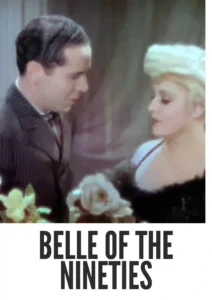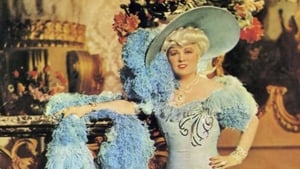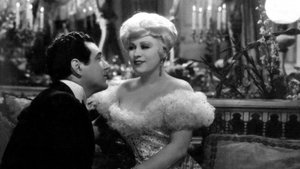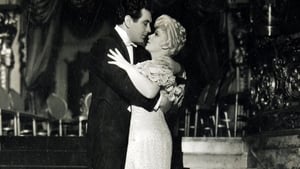Contact: info@alwanfilm.com
Video Sources 0 Views
Synopsis
Belle of the Nineties 1934 Colorized Review: Mae West Shines in a Colorized Classic

Introduction
Mae West, the bold and unapologetic screen siren of the early 1930s, delivered one of her most memorable performances in Belle of the Nineties (1934). Directed by the talented Leo McCarey, this film blends comedy, romance, and drama, while pushing the boundaries of what Hollywood audiences were used to. Originally released in black and white, Belle of the Nineties has also been reimagined through colorization, providing a fresh and visually compelling take on this classic. In this review, we’ll delve into the vibrant world of Belle of the Nineties and explore the film’s significance in Hollywood history, its unique storytelling, and the impact of colorization on this iconic Mae West performance.
Check The Full Colorized Movies List
Check Our Colorized Movies Trailer Channel
Understanding Belle of the Nineties 1934 Colorized: Director, Cast, and Genre
Director’s Vision for Belle of the Nineties
Leo McCarey, known for his expertise in both comedy and romance, directed Belle of the Nineties with a unique perspective that brought out the humor and boldness of Mae West’s character. McCarey’s directorial style emphasized character-driven storytelling, and he masterfully balanced West’s natural charisma with a rich, atmospheric backdrop reflective of 1890s America. His collaboration with West resulted in a film that embraced humor, wit, and drama, capturing the spirit of its time while pushing the boundaries of Hollywood’s portrayal of independent women.
Mae West’s Iconic Performance
Mae West’s performance as Ruby Carter in Belle of the Nineties is undoubtedly one of her most memorable. West was already an established star by 1934, known for her wit, charm, and ability to deliver risqué lines with a wink and a smile. Her portrayal of Ruby, a cabaret singer with a strong will and a daring personality, is the heart and soul of the film. West’s performance is filled with confidence and humor, cementing her status as a leading lady who broke away from the traditional mold.
The film also features strong supporting performances from Roger Pryor, who plays West’s love interest, Tiger Kid, and Johnny Mack Brown as Brooks Claybourne, another suitor vying for Ruby’s attention. Each actor contributes to the film’s charm, but it is West’s command of the screen that truly defines Belle of the Nineties.
Genre and Unique Cinematic Style
Belle of the Nineties belongs to the musical romantic-comedy genre, and it embodies the allure and decadence of 1890s America. Set in New Orleans, the film features lively music, entertaining cabaret performances, and a mix of romance and humor that keeps the audience captivated. The film’s genre allowed West to showcase her talents as both a singer and a performer, adding depth to her character and creating a memorable viewing experience. The movie’s blending of romantic entanglements and comedic elements paved the way for similar films that followed in the golden era of Hollywood.
Exploring the World of Belle of the Nineties 1934 Colorized: Plot and Characters
Plot Summary
The film opens with Ruby Carter (Mae West), a celebrated cabaret singer, entertaining crowds in St. Louis with her sassy songs and infectious charm. However, after a breakup with her boxer boyfriend, Tiger Kid, she decides to relocate to New Orleans, where she quickly becomes the star attraction at a local cabaret. As she gains fame, she attracts the attention of Brooks Claybourne, a wealthy admirer, whose fascination with Ruby stirs up conflict and romantic tension.
The story follows Ruby as she navigates fame, relationships, and rivalries in the glittering world of New Orleans’ nightlife. Despite the advances of Claybourne, her heart remains with Tiger Kid, setting the stage for a classic love triangle filled with humor, jealousy, and West’s signature one-liners. As the narrative unfolds, Ruby must make tough choices that reveal her true values and strength, leading to a climactic conclusion that showcases her independence and self-assured nature.
Characters and Themes
Ruby Carter is the film’s central character, and Mae West brings her to life with a blend of confidence, intelligence, and comedic flair. Ruby’s resilience and her ability to assert herself in a male-dominated environment make her a compelling and relatable protagonist. Supporting characters like Tiger Kid and Brooks Claybourne add depth to the story, creating a dynamic interplay of romance and rivalry that keeps the plot engaging. Each character plays a role in highlighting Ruby’s independence, challenging societal expectations, and exploring themes of love, loyalty, and self-respect.
The Art of Film Colorization
Understanding the Colorization Process
Film colorization is a technique that brings new visual layers to classic black-and-white films. In colorizing Belle of the Nineties, experts applied vibrant hues to each scene, meticulously working to match the period details, costumes, and set pieces with colors that reflected the 1890s setting. The process, involving advanced digital tools, carefully preserved the film’s original aesthetics while adding a fresh visual appeal.
Evolution of Colorization Techniques
The art of colorization has evolved dramatically since the early days of cinema. In its early form, colorization involved hand-painting individual frames, a painstaking process that required hours of labor. Over time, technology allowed for more efficient and accurate digital methods, allowing colorists to add realistic hues to scenes and enhancing the immersive experience of classic films. The colorized version of Belle of the Nineties reflects these advancements, creating a viewing experience that is both faithful to the original and visually engaging.
Early Colored Films: A Brief History
Rise of Early Color Techniques
The history of color in cinema is filled with experimentation and innovation. Early filmmakers used techniques such as tinting and toning to introduce color to specific scenes, while processes like Technicolor transformed cinema in the 1930s. Although Belle of the Nineties was initially produced in black and white, the colorized version captures the film’s spirit in a way that mimics these early efforts. By adding vibrant hues to Ruby Carter’s world, the colorized edition echoes the atmosphere that audiences in the 1930s might have imagined.
Belle of the Nineties and Its Colorized Version
The Decision to Release in Color
The decision to release a colorized version of Belle of the Nineties was driven by the desire to introduce a new audience to this Mae West classic. The bold colors capture the vibrant world of 1890s New Orleans, enhancing the film’s cabaret scenes and amplifying the charm of Mae West’s performance. By colorizing Belle of the Nineties, filmmakers aimed to bring out the character of the period while celebrating West’s unique appeal in a format that appeals to modern viewers.
Visual and Narrative Impact
The colorization of Belle of the Nineties transforms the film’s visuals, adding depth to its already dynamic scenes. The cabaret sequences, in particular, benefit from the added color, making Ruby’s performances more striking and memorable. The hues also enhance the opulent atmosphere of the cabaret and the allure of New Orleans’ nightlife, creating a world that feels more immersive and true to the story’s spirit.
The Debate Over Film Colorization
Examining the Controversy
The colorization of classic black-and-white films is a topic that has sparked significant debate. Critics argue that colorizing films alters the artistic vision of the original directors and can sometimes feel inauthentic. In the case of Belle of the Nineties, however, many fans believe that the colorized version enhances the experience, making the 1890s setting more vibrant and the performances more captivating. Supporters of colorization see it as a way to keep classic films relevant for new generations, giving them a modern twist while preserving the core story and characters.
Examining Belle of the Nineties as a Colorized Film
Enhancing or Altering the Viewing Experience?
The colorized version of Belle of the Nineties offers viewers a unique opportunity to experience the film with a renewed sense of vibrancy. The bold reds, blues, and golds added to Ruby’s costumes and the cabaret backdrop enhance the film’s energy and amplify West’s captivating performance. Some may feel that these colors detract from the film’s original charm, while others believe the added hues provide a new way to appreciate the film’s humor, wit, and atmosphere. Ultimately, whether colorization enhances or alters the viewing experience is subjective, depending on the viewer’s connection to the film and preferences for black-and-white cinema.
Influence and Legacy: Belle of the Nineties 1934 Colorized’ Impact on Hollywood
Breaking Hollywood Norms
Belle of the Nineties left a lasting mark on Hollywood, challenging norms and expectations for female characters and setting the stage for films that explored more independent and empowered female protagonists. Mae West’s portrayal of Ruby Carter pushed boundaries, as West’s character navigated relationships and success on her own terms. The film’s success demonstrated that audiences were receptive to strong female leads, paving the way for future actresses to take on similarly bold roles.
Inspiration for Future Filmmakers
West’s performance in Belle of the Nineties inspired filmmakers to create films that celebrated independent women and embraced humor, wit, and romance. The film’s legacy lives on in Hollywood, influencing films that showcase empowered female characters in both leading and supporting roles. Directors and screenwriters continue to draw inspiration from West’s fearless approach to comedy and character-driven storytelling.
Director Leo McCarey’s Cinematic Legacy
Beyond Belle of the Nineties
Leo McCarey went on to direct numerous iconic films that cemented his place in Hollywood history. His work on The Awful Truth (1937) and Going My Way (1944) showcased his talent for blending romance and comedy with heartfelt storytelling. McCarey’s influence on Hollywood can be seen in the way he seamlessly blended humor and emotion, creating films that resonate with audiences even today.
Themes Explored in Belle of the Nineties
Independence, Romance, and Humor
The themes of independence, romance, and humor are central to Belle of the Nineties. Ruby Carter’s character is unapologetically independent, challenging traditional gender roles and exploring relationships on her own terms. The film also emphasizes the importance of humor and resilience in the face of adversity, qualities that make Ruby a relatable and enduring character.
Reception and Controversy Surrounding Belle of the Nineties 1934 Colorized
Audience and Critical Response
Upon its release, Belle of the Nineties received acclaim for its humor, wit, and Mae West’s performance. Critics praised West’s ability to command the screen and deliver memorable lines, making her character both entertaining and empowering. The colorized version sparked debate, with some critics feeling it compromised the film’s original artistic vision, while others embraced the fresh perspective it offered.
Where to Watch Belle of the Nineties 1934 Colorized Online
Belle of the Nineties is available on streaming platforms like Amazon Prime Video and Turner Classic Movies. Both the original black-and-white and colorized versions are accessible, allowing viewers to choose their preferred experience. DVD and Blu-ray versions also provide an option for collectors and classic film enthusiasts.
FAQs About Belle of the Nineties 1934 Colorized
Q: What is the significance of the colorized version of Belle of the Nineties (1934)?
A: The colorized version offers a fresh take on the film, enhancing its visual appeal and attracting new audiences while honoring Mae West’s iconic performance.
Q: Who directed Belle of the Nineties (1934)?
A: Leo McCarey directed Belle of the Nineties, bringing his expertise in romance and comedy to the film.
Q: What themes are explored in Belle of the Nineties (1934)?
A: The film explores themes of independence, resilience, and humor, with Mae West’s character serving as a strong, independent female lead.
Conclusion
Belle of the Nineties (1934) remains a landmark film, celebrating Mae West’s unique charm and wit. The colorized version offers an intriguing way to experience the film, providing vibrant visuals that enhance the cabaret atmosphere of 1890s New Orleans. Whether viewed in its original format or as a colorized classic, Belle of the Nineties continues to captivate audiences with its humor, resilience, and the indomitable spirit of Mae West.














